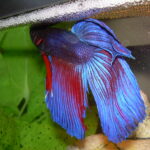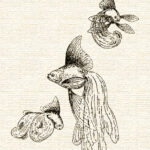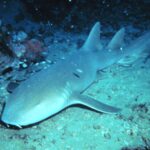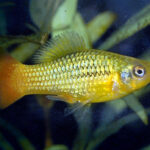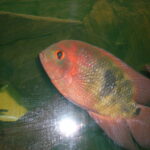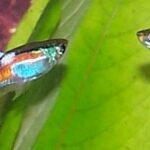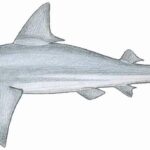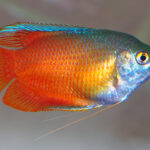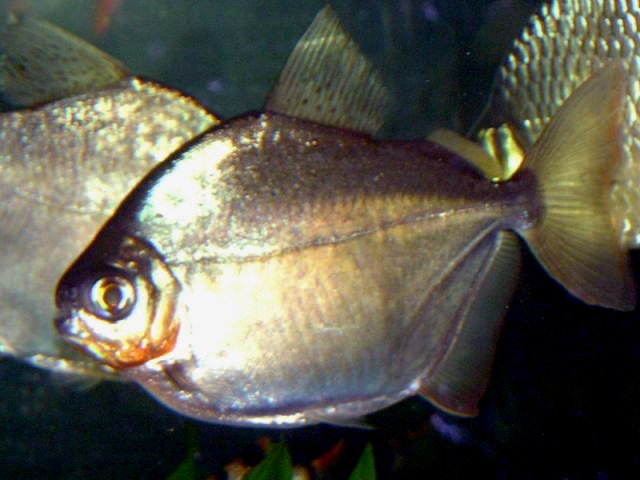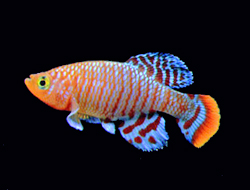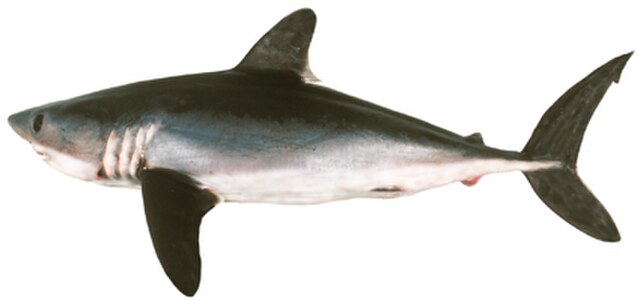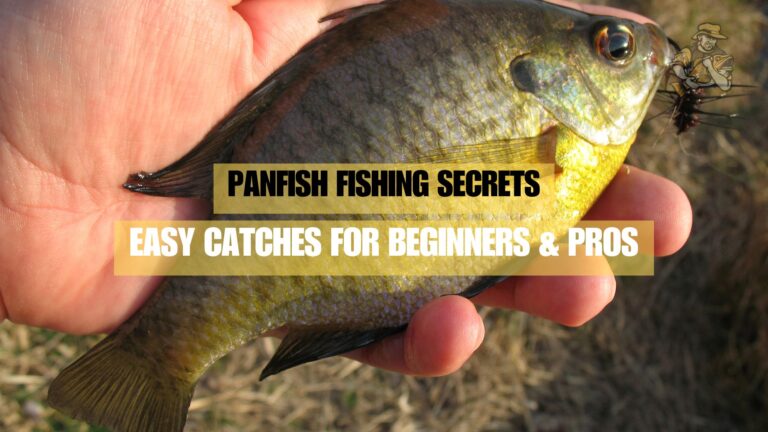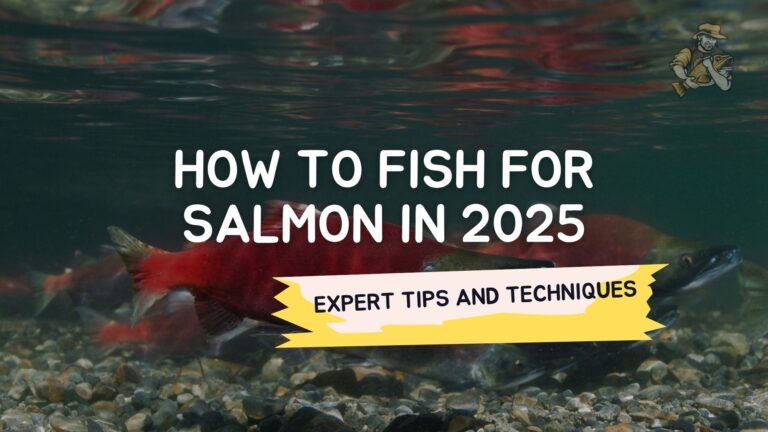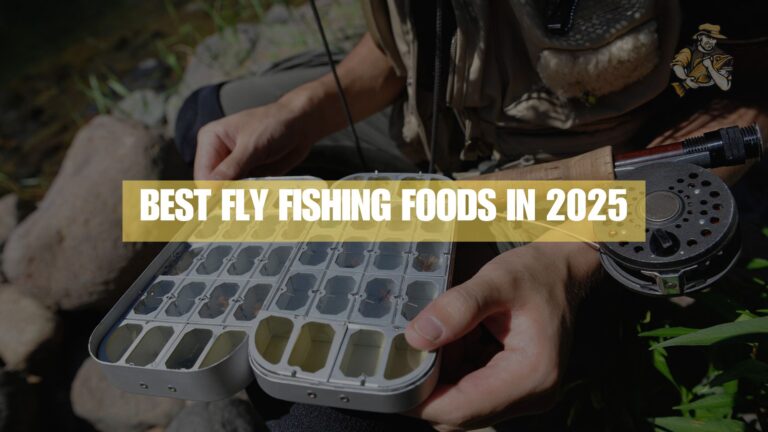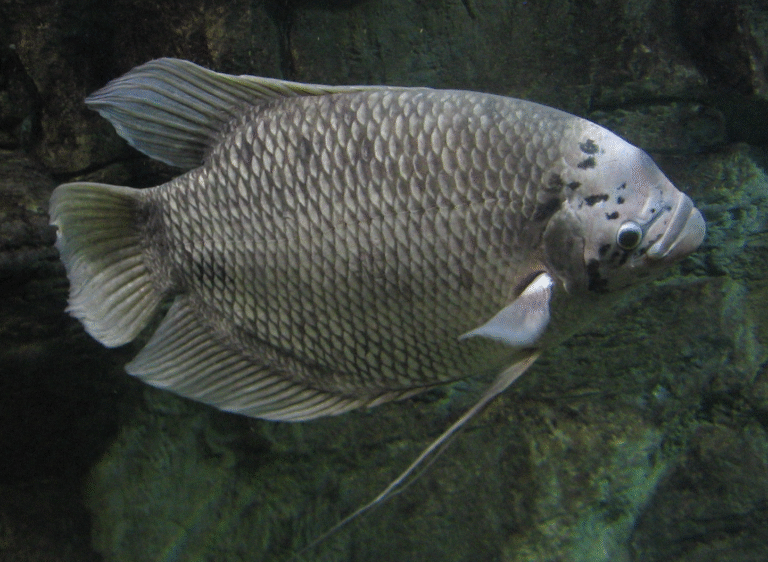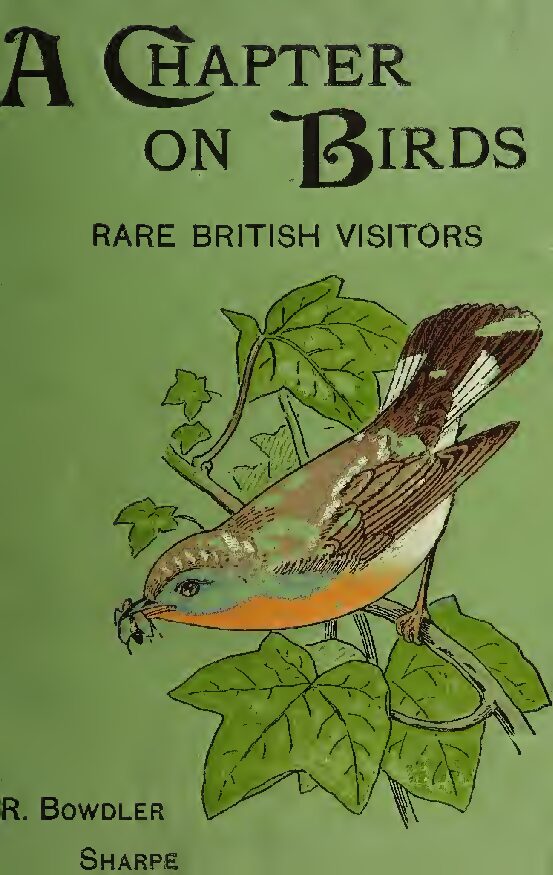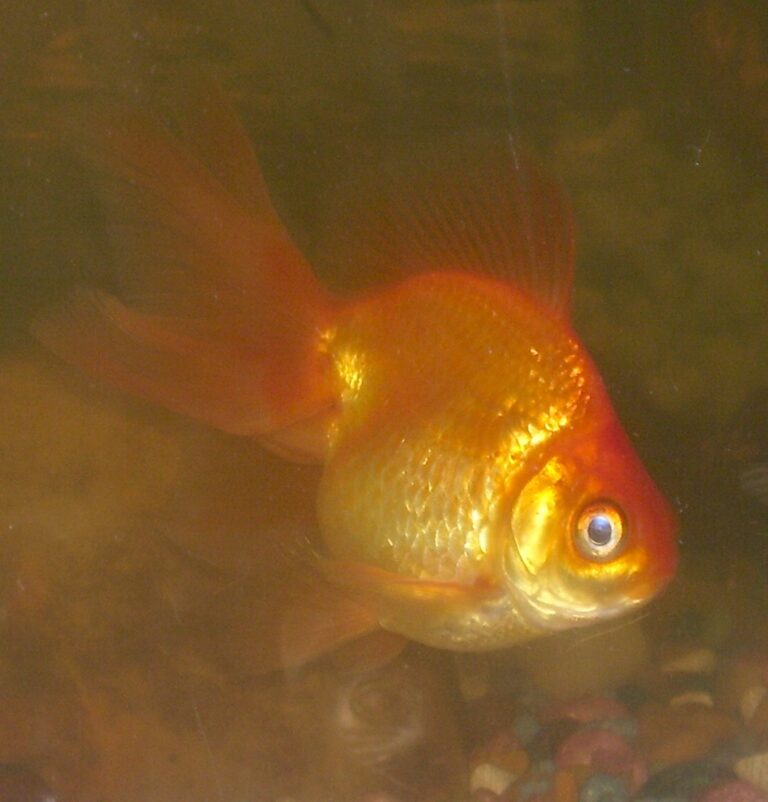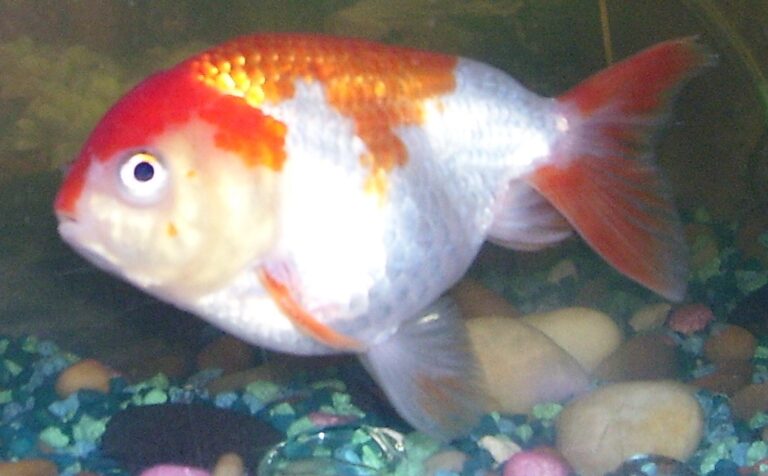Discus Fish
By Ryan Maron | Last Modified: June 6, 2025
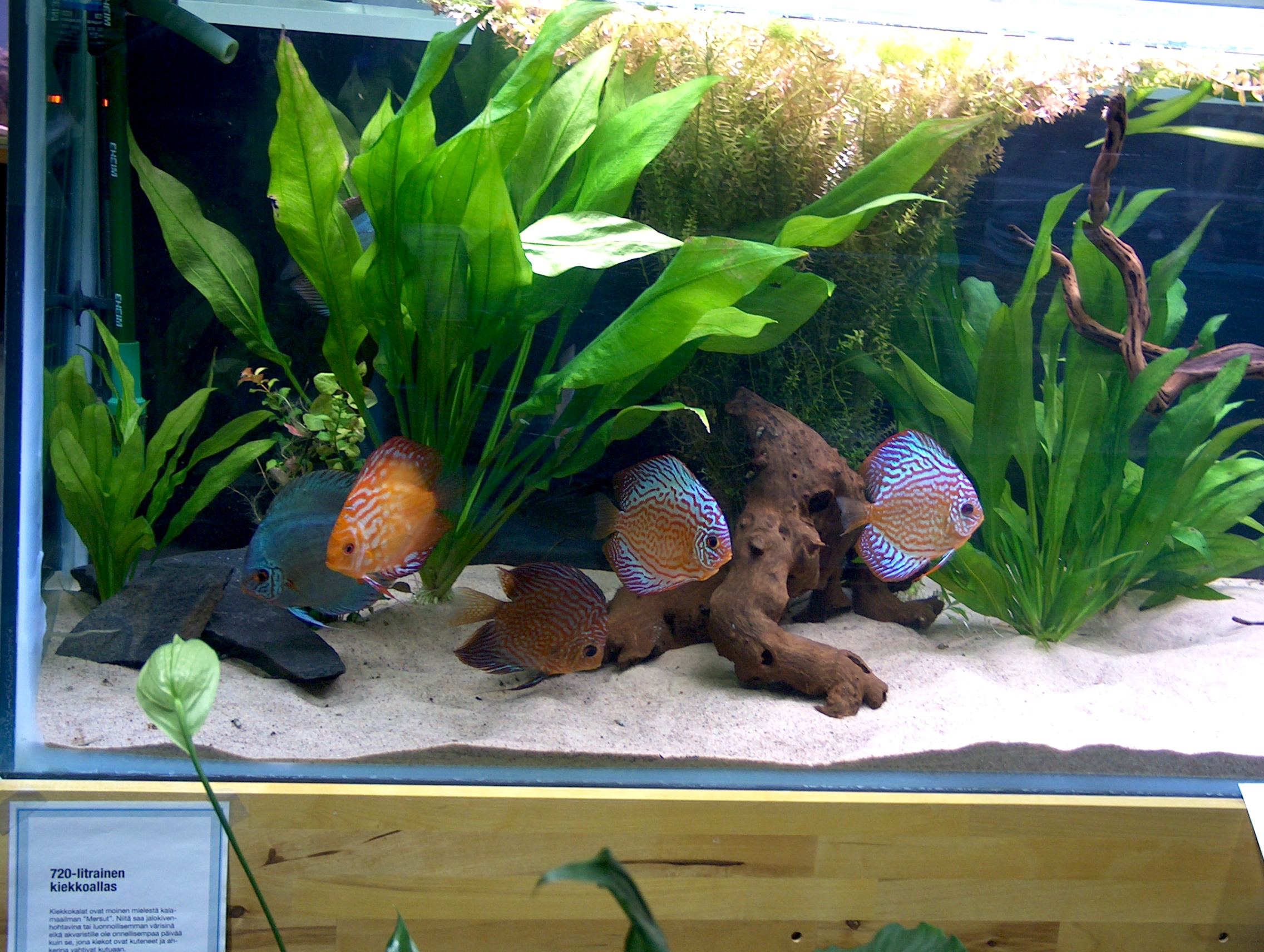
The Discus Fish (Symphysodon spp.) stands as one of the most revered species in the freshwater aquarium trade, earning its reputation as the “King of the Aquarium” through decades of dedicated breeding and cultivation. These laterally compressed, disc-shaped cichlids originate from the slow-moving waters of the Amazon Basin, where they inhabit flooded forests and quiet tributaries across South America. The genus encompasses three recognized species: Symphysodon aequifasciatus, Symphysodon discus, and Symphysodon tarzoo, each displaying distinct coloration patterns and geographical distributions.
Ecologically, Discus Fish serve as mid-level predators within their native Amazonian ecosystem, feeding primarily on small invertebrates, plant matter, and organic detritus. Their specialized parental care behavior, including the production of nutritious skin secretions to feed their fry, represents one of nature’s most sophisticated reproductive strategies among freshwater fish. This unique characteristic has made them subjects of extensive scientific study while simultaneously establishing their cultural significance in the global aquarium hobby, where they command premium prices and dedicated breeding programs spanning multiple continents.
| Feature | Details |
|---|---|
| Common Name | Discus Fish |
| Scientific Name | Symphysodon spp. |
| Family | Cichlidae |
| Typical Size | 15-20 cm (6-8 inches), 150-250g |
| Habitat | Amazonian slow-water environments |
| Diet | Omnivorous – invertebrates and plant matter |
| Distribution | Amazon Basin, South America |
| Conservation Status | Not Evaluated (IUCN) |
Taxonomy & Classification
The taxonomic classification of Discus Fish has undergone significant revision since their initial scientific description in the mid-19th century. The genus Symphysodon belongs to the family Cichlidae, one of the largest families of freshwater fish worldwide. Current molecular phylogenetic studies recognize three distinct species within the genus, replacing earlier classifications that recognized only two species with multiple subspecies.
Symphysodon aequifasciatus, commonly known as the Green Discus, represents the most widely distributed species, ranging from the central Amazon Basin through Peru, Colombia, and western Brazil. This species exhibits the characteristic green base coloration with vertical dark bars and demonstrates considerable phenotypic variation across its range. Symphysodon discus, the Heckel Discus, maintains a more restricted distribution in the Rio Negro and surrounding tributaries, distinguished by its prominent first, fifth, and ninth vertical bars that remain visible even during stress coloration changes.
The most recently described species, Symphysodon tarzoo, occupies the western Amazon Basin and displays intermediate characteristics between the other two species. Genetic analysis has revealed that these three species diverged approximately 3-5 million years ago, coinciding with major geological changes in the Amazon Basin that created isolated populations. The complex breeding history and hybridization potential between species has contributed to taxonomic confusion, particularly among aquarium-bred specimens where selective breeding has produced numerous color variants that may not reflect natural population genetics.
Physical Description
Discus Fish exhibit the characteristic laterally compressed, disc-shaped body morphology that gives them their common name. Adult specimens typically reach 15-20 centimeters in diameter, though exceptional individuals may exceed 23 centimeters under optimal conditions. The body shape represents an evolutionary adaptation to their native habitat, allowing them to navigate efficiently through submerged vegetation and fallen timber in flooded forest environments.
The dorsal and anal fins extend along most of the body’s height, creating the distinctive circular profile when fully displayed. These fins contain 9-11 dorsal spines and 13-16 soft rays, with corresponding anal fin ray counts of 8-9 spines and 13-16 soft rays. The caudal fin maintains a rounded to slightly truncate shape, lacking the elaborate extensions seen in some related cichlid species. Pectoral fins are positioned relatively high on the body, facilitating precise maneuvering through complex underwater structures.
Coloration patterns vary significantly between species and populations, ranging from subdued browns and greens to brilliant blues, reds, and yellows in selectively bred aquarium strains. Wild specimens typically display earth-tone base colors with metallic highlights and vertical barring patterns that serve as both camouflage and social communication tools. The skin contains specialized chromatophores that allow rapid color changes in response to environmental conditions, social hierarchy, and reproductive status. Scale patterns follow the typical cichlid arrangement, with cycloid scales covering the body and specialized sensory scales along the lateral line system that extends from the gill covers to the caudal peduncle.
Habitat & Distribution
The natural distribution of Discus Fish encompasses the vast Amazon Basin, spanning across multiple South American countries including Brazil, Peru, Colombia, Venezuela, and Guyana. These fish inhabit the slow-moving, soft-water environments characteristic of blackwater and whitewater tributaries, where water temperatures remain consistently warm between 26-30°C throughout the year. The geographical separation of different river systems has contributed to the speciation within the genus, with each species adapted to specific water chemistry parameters and ecological niches.
Symphysodon species demonstrate a strong preference for areas with abundant vertical structure, including submerged tree trunks, root systems, and dense aquatic vegetation. During seasonal flooding, they move into flooded forest areas where they feed among the leaf litter and utilize the increased space for territorial establishment and breeding activities. Water chemistry in their native habitats typically features extremely soft water with total dissolved solids below 50 ppm, pH values ranging from 4.5-6.5, and high concentrations of dissolved organic compounds that create the characteristic tea-colored appearance of many Amazonian waters.
The seasonal variation in water levels plays a crucial role in Discus Fish ecology, with breeding typically coinciding with rising water levels that provide increased food availability and spawning sites. These fish occupy depth ranges from near-surface areas to approximately 5 meters, though they show preference for depths of 1-3 meters where light penetration supports their visual feeding strategies while providing protection from aerial predators. The complex three-dimensional habitat structure of fallen trees and aquatic vegetation creates numerous microhabitats that support different life stages and allow for social hierarchy establishment within Discus Fish communities.
Diet & Feeding Behavior
Discus Fish exhibit omnivorous feeding behavior with a diet composition that varies seasonally based on food availability in their Amazonian habitat. Their feeding strategy combines elements of browsing, picking, and filter feeding, utilizing their protrusible mouth to extract small food items from crevices and surfaces. The oral structure includes pharyngeal teeth adapted for processing both plant material and small invertebrates, reflecting their dietary flexibility.
Primary food sources include chironomid larvae, small crustaceans, aquatic worms, and various microorganisms found in the biofilm that develops on submerged surfaces. Plant matter constitutes a significant portion of their diet, particularly during certain seasons when aquatic plants produce seeds and fruits that fall into the water. The consumption of organic detritus and decomposing plant material provides essential nutrients and aids in the maintenance of beneficial gut bacteria necessary for proper digestion.
Feeding behavior exhibits strong diurnal patterns, with peak activity occurring during dawn and dusk periods when many prey organisms are most active. Discus Fish demonstrate sophisticated foraging strategies, including cooperative feeding behaviors where multiple individuals work together to disturb substrate and expose hidden prey items. Their feeding technique involves careful inspection of potential food sources, utilizing both visual and chemosensory cues to assess food quality before consumption.
The seasonal flooding cycle significantly influences feeding patterns, as rising waters bring terrestrial insects and plant material into the aquatic environment, creating temporary abundance that Discus Fish exploit for rapid growth and reproductive conditioning. During lower water periods, feeding becomes more selective and focused on established food sources within their core habitat areas. This dietary plasticity has contributed to their success in the aquarium trade, where they readily adapt to prepared foods while maintaining optimal health and coloration.
Behavior & Adaptations
Discus Fish demonstrate complex social behaviors that reflect their evolutionary adaptation to life in structured Amazonian environments. These cichlids establish hierarchical social systems within their communities, with dominant individuals maintaining preferred feeding territories and spawning sites. Social interactions involve sophisticated visual and chemical communication methods, including color pattern changes, fin displays, and the release of species-specific pheromones that convey information about reproductive status, territorial boundaries, and individual identity.
Territorial behavior intensifies during breeding periods, when pairs establish and defend specific areas suitable for spawning and fry rearing. Non-breeding individuals often form loose aggregations in neutral areas, displaying schooling-like behavior that provides protection from predators while allowing access to distributed food resources. The social structure demonstrates remarkable flexibility, adapting to seasonal changes in habitat availability and population density fluctuations.
One of the most remarkable adaptations of Discus Fish involves their specialized parental care system. Both parents produce a nutritious mucus secretion through specialized skin cells, providing essential nutrition for their developing fry during the critical early life stages. This adaptation represents an evolutionary strategy that reduces dependency on external food sources during the vulnerable post-hatching period, significantly improving offspring survival rates in nutrient-poor Amazonian waters.
Temperature regulation behavior includes seeking thermally stable microhabitats and adjusting activity patterns to coincide with optimal temperature ranges. During cooler periods, Discus Fish may reduce activity levels and seek deeper water areas where temperatures remain more stable. Their physiological adaptations include efficient oxygen utilization systems that allow them to thrive in waters with variable dissolved oxygen levels, particularly important during dry season periods when water levels drop and organic decomposition increases oxygen demand.
Reproduction & Life Cycle
The reproductive biology of Discus Fish represents one of the most sophisticated systems among freshwater cichlids, characterized by extended parental care and unique nutritional provisioning strategies. Sexual maturity typically occurs between 12-18 months of age, corresponding to body sizes of 10-12 centimeters in diameter. Pair formation involves complex courtship rituals that may extend over several weeks, during which potential partners engage in synchronized swimming patterns, color displays, and territory establishment behaviors.
Spawning site selection focuses on vertical surfaces such as broad-leafed aquatic plants, submerged logs, or smooth rock faces in areas with gentle water circulation. The female deposits 200-400 adhesive eggs in neat rows while the male follows closely behind to provide fertilization. Both parents share responsibility for egg care, fanning the spawn with their pectoral fins to maintain adequate water circulation and removing any eggs that show signs of fungal infection or developmental abnormalities.
Hatching occurs approximately 60-72 hours after fertilization, depending on water temperature, with larvae remaining attached to the spawning substrate by adhesive threads for an additional 4-5 days while absorbing their yolk sacs. The most remarkable aspect of Discus Fish reproduction begins when the free-swimming fry attach themselves to the sides of their parents to feed on specialized skin secretions rich in proteins, lipids, and antibodies essential for proper development.
This mucus feeding behavior continues for 2-3 weeks, during which the fry gradually transition to independent feeding on microorganisms and small planktonic prey. Parent fish often alternate between feeding duties, allowing one parent to forage while the other remains with the fry school. The extended parental care period may last 6-8 weeks total, with parents aggressively defending their offspring against potential predators and guiding them to optimal feeding areas. This reproductive strategy has evolved to maximize offspring survival in the competitive and resource-limited environment of Amazonian waters, though it limits the frequency of reproductive cycles compared to many other cichlid species.
Predators & Threats
In their natural Amazonian habitat, Discus Fish face predation pressure from various aquatic and semi-aquatic species throughout different life stages. Adult Discus Fish primary predators include larger cichlids, catfish species such as Pseudoplatystoma and Sorubim, and opportunistic predators like piranhas and electric fish. Juvenile Discus Fish face additional threats from smaller predatory fish, aquatic insects, and crustaceans that can overwhelm young specimens before they develop adequate escape responses and defensive behaviors.
Aerial predation presents significant challenges, particularly for fish inhabiting shallow areas during feeding activities. Kingfishers, herons, and other piscivorous birds pose constant threats that have influenced the evolution of Discus Fish schooling behaviors and their preference for areas with overhead cover. The disc-shaped body morphology, while advantageous for maneuvering through vegetation, may actually increase vulnerability to certain predators by presenting a larger target profile from specific angles.
Habitat degradation represents the most significant long-term threat to wild Discus Fish populations. Deforestation activities within the Amazon Basin remove critical riparian vegetation that provides both food sources and structural habitat complexity essential for Discus Fish survival. Agricultural runoff introduces chemical pollutants and increases sedimentation rates that degrade water quality and reduce the clarity necessary for their visual feeding strategies.
Climate change impacts affect Discus Fish through alterations in seasonal flooding patterns that disrupt breeding cycles and reduce access to traditional spawning and feeding areas. Extended dry periods concentrate fish populations in smaller water bodies, increasing competition for resources and disease transmission rates. The collection pressure for the international aquarium trade has historically impacted certain populations, though sustainable breeding programs have reduced demand for wild-caught specimens in recent decades. Water pollution from mining activities, particularly mercury contamination from gold mining operations, poses ongoing threats to fish health and reproductive success throughout their range.
Conservation Status
The International Union for Conservation of Nature (IUCN) has not formally evaluated Discus Fish species for their Red List assessment, leaving their conservation status as “Not Evaluated” despite growing concerns about population trends throughout their native range. This absence of formal assessment reflects the limited comprehensive population studies available for these species, rather than an indication of stable populations. Recent research suggests that while Discus Fish populations remain relatively stable in protected areas and remote regions of the Amazon Basin, they face increasing pressure in accessible areas near human settlements.
Local population assessments conducted by Brazilian and Peruvian researchers indicate declining numbers in heavily fished areas, particularly regions where collecting for the aquarium trade intersects with habitat degradation from agricultural expansion. The complex life history characteristics of Discus Fish, including their extended parental care period and relatively low reproductive output compared to other cichlids, make populations vulnerable to overexploitation and slow to recover from population declines.
Conservation efforts have focused primarily on habitat preservation through the establishment of protected areas within the Amazon Basin and the development of sustainable aquaculture programs that reduce pressure on wild populations. The success of captive breeding programs has significantly decreased demand for wild-caught specimens in the international aquarium trade, though regional markets may still rely on wild collection. Several South American countries have implemented regulations governing the collection and export of native fish species, though enforcement remains challenging in remote areas.
Research priorities include comprehensive population surveys across the entire range of each species, genetic studies to assess population connectivity and identify distinct conservation units, and long-term monitoring programs to track population trends in relation to environmental changes. The establishment of community-based conservation programs that provide economic alternatives to fish collection has shown promise in several regions, combining conservation goals with local development needs. Climate change mitigation efforts at both regional and global scales remain critical for long-term conservation success, as maintaining natural hydrological cycles is essential for Discus Fish reproductive success and habitat availability.
Human Interaction
The relationship between humans and Discus Fish has evolved from initial scientific discovery to one of the most significant human-fish interactions in the freshwater aquarium hobby. German ichthyologist Johann Jakob Heckel first described Symphysodon discus in 1840, beginning a scientific and commercial interest that has continued for over 180 years. The aquarium trade relationship intensified during the 1930s and 1940s when improved transportation methods allowed live fish shipment from South America to North American and European markets.
Commercial breeding programs have transformed Discus Fish from rare, expensive specimens to widely available aquarium subjects, though premium varieties still command substantial prices in specialized markets. Professional breeders have developed numerous color varieties and strains that extend far beyond natural coloration patterns, creating a multi-million dollar international industry centered around these fish. The breeding industry has also contributed significantly to our understanding of cichlid reproductive biology and fish nutrition science.
In their native regions, Discus Fish hold cultural significance among indigenous communities who have traditionally included them in subsistence fishing activities and recognized their role as indicators of healthy aquatic ecosystems. Local ecological knowledge regarding Discus Fish behavior and habitat preferences has proven valuable for conservation planning and sustainable management programs. Some communities have developed eco-tourism programs that include Discus Fish observation as part of broader Amazon wildlife experiences.
The scientific research value of Discus Fish extends beyond basic biology to applications in aquaculture development, animal behavior studies, and comparative physiology research. Their complex parental care behaviors have provided insights into the evolution of social systems among fish, while their adaptation to extreme soft-water conditions has contributed to our understanding of fish osmoregulation and mineral metabolism. Educational programs featuring Discus Fish have introduced countless aquarium hobbyists to principles of water chemistry, fish nutrition, and aquatic ecosystem management, creating broader awareness of freshwater conservation issues.
Interesting Facts
Discus Fish possess several remarkable characteristics that distinguish them from other freshwater fish species and contribute to their enduring fascination among scientists and aquarium enthusiasts. The mucus feeding behavior of Discus Fish fry represents one of the few examples of mammalian-like parental nutrition provisioning found among fish species. This secretion contains not only essential nutrients but also antibodies and beneficial bacteria that help establish the fry’s immune system and digestive microbiome, paralleling aspects of mammalian lactation in functional terms.
The color-changing abilities of Discus Fish surpass those of many other freshwater species, with individuals capable of dramatic transformations within seconds in response to social interactions, environmental changes, or stress conditions. These color changes involve complex neurological controls over chromatophores that can produce rapid shifts between cryptic camouflage patterns and brilliant display colorations. Research has revealed that Discus Fish can distinguish between individual conspecifics based on subtle pattern variations, suggesting sophisticated visual processing capabilities.
Temperature sensitivity in Discus Fish exceeds that of most temperate freshwater species, with their metabolic processes optimized for the consistently warm conditions of tropical waters. This adaptation makes them excellent indicator species for climate change research, as they respond predictably to temperature fluctuations that might not affect other fish species. Their requirement for specific water chemistry parameters has contributed to advances in aquarium water treatment technology and our understanding of fish physiological requirements.
The longevity of Discus Fish in captivity can exceed 15 years under optimal conditions, with some documented cases of individuals reaching 18-20 years. This extended lifespan, combined with their complex social behaviors, allows for the development of individual personalities and learned behaviors that many aquarists find engaging. The economic impact of Discus Fish on the global aquarium trade is substantial, with annual sales values estimated in the tens of millions of dollars and supporting breeding operations across multiple continents. Their influence on aquarium design and equipment development has driven innovations in filtration, heating, and water treatment systems that benefit the broader aquarium hobby.
Frequently Asked Questions
What water conditions do Discus Fish require in captivity?
Discus Fish require warm, soft, and slightly acidic water conditions that mimic their native Amazonian habitat. Optimal parameters include temperatures between 28-30°C, pH levels of 6.0-7.0, and very soft water with total dissolved solids below 100 ppm. Water quality must remain exceptionally stable, as Discus Fish are sensitive to parameter fluctuations that other fish species might tolerate. Regular water changes of 25-30% weekly help maintain the pristine conditions these fish require for optimal health and coloration.
How large do Discus Fish grow and what size aquarium do they need?
Adult Discus Fish typically reach 15-20 centimeters in diameter, though exceptional specimens may exceed 23 centimeters. Due to their size, social nature, and territorial requirements, they need spacious aquariums with minimum volumes of 200-300 liters for a small group. Larger aquariums of 400+ liters are preferred for breeding pairs or community groups, as the additional space reduces stress and allows for proper territory establishment. Tank height is particularly important since Discus Fish naturally inhabit vertical habitat structures.
What should Discus Fish eat in aquarium environments?
Discus Fish thrive on varied diets that include high-quality prepared foods supplemented with frozen and live options. Premium cichlid pellets should form the dietary foundation, supplemented with frozen bloodworms, brine shrimp, and daphnia. Many successful keepers also provide homemade food mixtures containing beef heart, seafood, and vegetables. Feeding frequency should be 2-3 times daily with portions consumed within 2-3 minutes, as uneaten food rapidly degrades water quality in the warm temperatures these fish require.
Can Discus Fish be kept with other fish species?
Discus Fish can coexist with carefully selected tankmates that share similar water parameter requirements and peaceful temperaments. Suitable companions include small tetra species, Corydoras catfish, and certain dwarf cichlid species. However, many experienced keepers prefer species-only setups to eliminate competition for food and reduce stress factors that can compromise Discus Fish health. Any potential tankmates must tolerate the high temperatures and soft water conditions that Discus Fish require.
Conclusion
Discus Fish represent a remarkable example of evolutionary specialization within the diverse cichlid family, demonstrating complex parental care behaviors and sophisticated social systems that continue to fascinate scientists and aquarium enthusiasts worldwide. Their role as flagship species for Amazonian conservation efforts highlights the critical importance of preserving freshwater biodiversity in one of Earth’s most threatened ecosystems. The successful development of sustainable breeding programs has reduced pressure on wild populations while maintaining these magnificent fish as accessible subjects for scientific research and responsible aquarium keeping, ensuring their continued contribution to our understanding of freshwater ecology and fish behavior.
Share The Article:
More Fish Species:
-
Silver Dollar Fish
The Silver Dollar Fish (*Metynnis argenteus*) stands as one of South America’s most recognizable freshwater species, renowned for its…
-
Green Terror Cichlid
The Green Terror Cichlid stands as one of South America’s most formidable and visually striking freshwater fish species, commanding…
-
Killifish
Killifish represent one of the most diverse and ecologically significant groups of small freshwater and brackish water fish, comprising…
-
Porbeagle Shark
The Porbeagle Shark (*Lamna nasus*) stands as one of the most fascinating and ecologically significant predators in the North…
-
Green Swordtail
The Green Swordtail (Xiphophorus hellerii) represents one of the most recognizable and ecologically significant freshwater fish species in both…
-
Tiger Barb
The Tiger Barb (Puntigrus tetrazona) stands as one of Southeast Asia’s most recognizable freshwater cyprinids, distinguished by its vibrant…
Discover
-
How to Find Good Fishing Spots That Actually Produce Fish
Finding productive fishing spots is often what separates successful anglers from those who go home empty-handed. It’s not just…
-
15 Panfish Fishing Secrets: Easy Catches for Beginners & Pros
You know what’s funny about panfish? These little fighters have probably hooked more new anglers than any other species,…
-
How to Fish for Salmon in 2025: Expert Tips and Techniques
Few fishing experiences match the thrill of feeling a salmon take your line. These powerful fish have captivated anglers…
-
Best Time to Go Fishing: Timing Tips for Bigger Catches
If there’s one question I get asked more than any other, it’s about timing. When should you cast that…
-
7 Best Fly Fishing Foods That Trout Can’t Resist in 2025
If there’s one thing I’ve learned after three decades of fly fishing, it’s that trout can be maddeningly selective…
-
Great Lakes Fishing Tactics That Nobody Talks About (But Should)
Ever notice how some anglers consistently haul in impressive catches from the Great Lakes while others struggle to get…
Discover
-
Giant Gourami
The Giant Gourami (Osphronemus goramy) represents one of the most remarkable freshwater fish species in Southeast Asia, distinguished by…
-
Delta Tail Betta
The Delta Tail Betta (Betta splendens) represents one of the most recognizable and sought-after varieties within the aquarium trade,…
-
Fantail Goldfish
The Fantail Goldfish represents one of the most recognizable and beloved fancy goldfish varieties in the aquarium trade worldwide….
-
What do You Need for Fishing in 2025? | Essential Gear for Beginners and Veterans
As I was organizing my tackle box last weekend for an early spring trip to Lake Michigan, I realized…
-
5 Deadly Trolling Tactics Big Fish Can’t Resist
The first time I watched a 40-pound king salmon completely ignore my perfect trolling setup, I wanted to throw…
-
Lionhead Goldfish
The Lionhead Goldfish represents one of the most distinctive and cherished ornamental varieties within the goldfish family, captivating aquarists…

